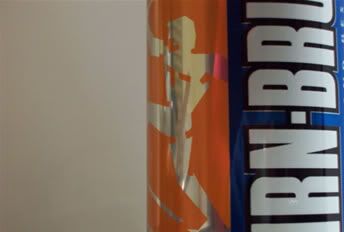
The other day I was tucking into a hard-earned Tunnocks Caramel Wafer when I started thinking about the wonders of Scottish cuisine. Scotland has some fantastic foods - wild game, fish, seafood, raspberries (best in the world, without doubt). But it also has some truly shocking foods - for every venison roast you have the deep-fried pizza supper. Gourmet foodie types might love nothing better than Cullen Skink, but plenty of regular Scots settle for Chips and Curry sauce. It's for this reason that Scotland leads the developed world in cancer, strokes, tooth decay, and heart disease - things we eat here can clog your arteries before you've put down the fork (or spoon, wrapper, bottle). After enjoying the Asian-themed fusion cooking they practically invented in Australia, not to mention the genuine Asian-themed food in Japan, the muck people eat here has certainly stood out.
Of course the classic Scottish stereotypical dish is the mighty deep-fried Mars Bar. You name it, the wacky Scots will coat it in sticky fat and cook it in liquid fat. Foods that are fat-based tend to work best. According to the BBC, it was 'invented' in Stonehaven - a permanently wintry port near Aberdeen, but are sold by 22% of Scottish takeaways - including one that sells 200 per week. 3/4 of them to children. I actually know people who've eaten one - and as far as I know they are all still with us - but wouldn't risk one myself. I actually found a recipe for them once, where it was described as "an excellent source of fat, sugar and calories. For a seasonal variation you could also try deep frying a Cadbury's Creme Egg." You don't get those off the Easter bunny.
When you go into a Scottish takeaway the options lettered on the board above the portly staff are bewildering - and not just for the disgraceful lack of mushy peas north of the border. When will they learn? Fish and chips, is of course the classic - but a fish supper usually gets you two bits of battered fish and enough chips to choke a horse. Also on the menu will be deep-fried haggis (I'm not a fan of haggis, but I do eat it now and again. It tastes like a meaty spice explosion), and the three coloured puddings - black, white and red. Being from Lancashire I'm familiar with black pudding - or blood sausage - but I never really found out what was in white pudding (I assume it's black pudding without the black), and red pudding is something I've only ever seen in a few takeaways - maybe you have to ask the server with a knowing wink to get one. They look interesting lined up together in the sweaty glass case above the frying oil - like organs from an alien dissection.
It's not just solid food either, we like our calories and fat in liquid form too. Take Irn Bru. According to Wikipedia, Scotland is one of only three countries where Coca Cola isn't the number one selling soft drink (the other two are, of course, Sweden and Peru). Irn Bru takes those honours. Invented in 1901, it's exact recipe is known to only two board members. To be honest - like haggis - I don't really want to know what's in it. I remember the old advertising slogan "Made in Scotland from girders" but amusingly Wikipedia counters this claim by stating that only 0.002% by volume comes from Ammonium ferric citrate, although I doubt many skyscrapers are supported by beams of that. It doesn't contain caffeine though, although the carcinogenic colourings that give it the distinctive orange hue mean it's banned in America, apparently. But it's good for hangovers, so we'll forgive it that. It has an odd, faintly metallic bubblegummy taste, which like haggis - indeed like all Scottish food - is an acquired taste. Now which pudding shall I have tomorrow?